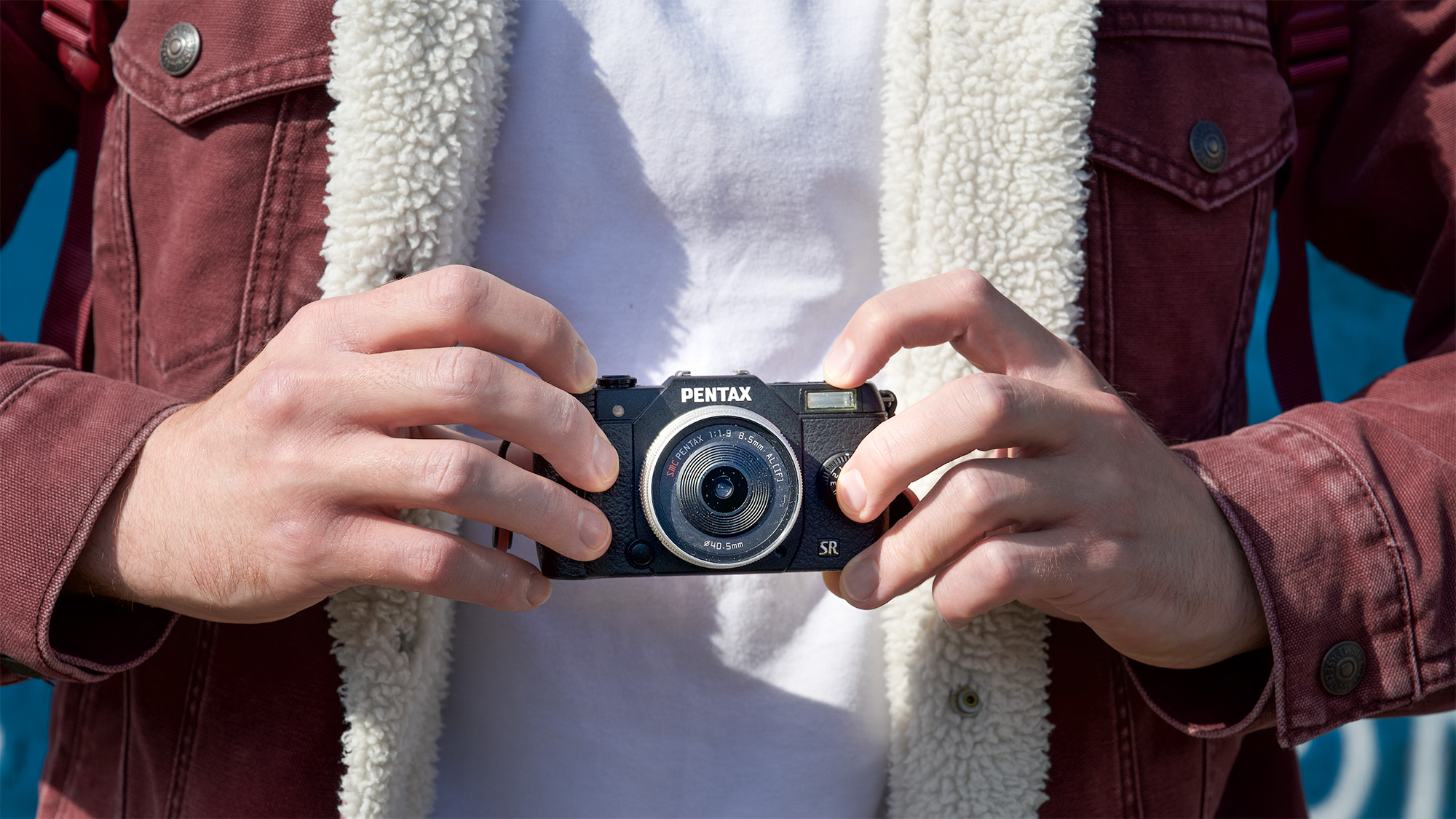I think this mini mirrorless oddity, the Pentax Q10, is the perfect everyday camera
The Pentax Q10 is a tiny little modern mirrorless classic that's easy on the eye, your back and your wallet

When I hold the Pentax Q10 – clawed fingers awkwardly clasping its paltry form factor – I can't help but imagine I'm Andre the Giant, holding one of the best mirrorless cameras that are of a standard size.
The famed wrestler was billed at an incredible 7ft 4in tall with 16-inch hands, not to mention an absolute legend of the sport and a cultural icon. I guess the Pentax Q10 doesn't deserve to be uttered in the same sentence… or does it?
The Q10 is one of four bodies that make up the Pentax Q system. The Q, Q10, Q7 and Q-S1 were released from 2011 to 2014, and these diminutive little cameras are quite unlike anything I've ever used before.
Each body is about the size of your average compact camera, but they're bonafide interchangeable lens mirrorless devices, with their very own series of Q-mount optics. At a time when Pentax's DSLR- and film-focused mantra is looking backward, the 'Q' feels uncharacteristically futuristic.
This particular Q10 belongs to my colleague and friend, @therobspedding, who uses it as his everyday 'beater camera'. In fact, this is his third Pentax Q. Every time he's sold one he's found that, however small, the absent Q has left an indelible hole in his camera collection. Having made the mistake of selling two Qs, he tells me that this one's staying. And he means it.
If, like Rob, you simply cannot derive the same enjoyment, and indeed a connection, with photography when using a smartphone camera, the Pentax Q is a palpable alternative. It's hard to argue with the little camera's perhaps unrivaled blend of portability and versatility, thanks to its diminutive size and eight-strong roster of interchangeable lenses.

Rob's right. Much in the same way that the Casio G-Shock has long been considered the perfect 'beater watch', the Pentax Q is the perfect 'beater camera'.
Get the Digital Camera World Newsletter
The best camera deals, reviews, product advice, and unmissable photography news, direct to your inbox!
And yet, I know tons of people who proudly brandish a Casio G-Shock on their arm – but while Rob's one of them, he's the only person I know who's owned a Pentax Q. Let alone three of them! So why are people spending top dollar on cameras like the Fujifilm X100VI as their daily point-and-shoot, when cameras like the Pentax Q can be picked up for comparative pittance?
Sure, the Q10's specs are nothing to shout about in 2024. But when you consider it's over a decade old, and launched as one of the smallest interchangeable lens mirrorless cameras ever released, it's still perfectly usable. It's built around a 12MP, 1/2.3-inch CMOS sensor, shoots RAW, shoots bursts at 5fps, boasts face-detection, has a max shutter speed of 1/8000 sec, can shoot FullHD 30p and even has a neat little pop-up flash.
Unsurprisingly, there's no viewfinder, so you'll have to compose via the 3-inch LCD monitor – which, as with most compacts, is nearly as big as the camera itself. But what I really like about this little device is how robust it feels. You'd assume it feels toy-like in the hand, but it actually feels quite meaty.
Sadly, Rob's 01 Standard Prime 8.5mm f/1.9 and 06 Telephoto Zoom 15-45mm f/2.8 don't feel nearly as premium or robust – but this is a teeny tiny system, after all. And if you're feeling particularly chic, you can pick up Pentax Qs in a range of funky colors, since Pentax offered a whopping 100 color variations via special order.
So, there you have it. If you're looking for a 'beater camera' or a device with a little more soul than the best camera phone, you can pick up a Pentax Q and a lens or two for far less than many other modern classics. And if you're a Nikon user who likes the idea of the Pentax Q, maybe I'll take the very similar Nikon 1 system for a spin in a future article. Yet another miniature mirrorless system that was released in 2011. Watch this little ol' space…

If you're into everyday cameras then check out the best point and shoot camera, the best travel camera, and the best APS-C compact cameras.

Mike is Digital Camera World's How To Editor. He has over a decade of experience, writing for some of the biggest specialist publications including Digital Camera, Digital Photographer and PhotoPlus: The Canon Magazine. Prior to DCW, Mike was Deputy Editor of N-Photo: The Nikon Magazine and Production Editor at Wex Photo Video, where he sharpened his skills in both the stills and videography spheres. While he's an avid motorsport photographer, his skills extend to every genre of photography – making him one of Digital Camera World's top tutors for techniques on cameras, lenses, tripods, filters and other imaging equipment – as well as sharing his expertise on shooting everything from portraits and landscapes to abstracts and architecture to wildlife and, yes, fast things going around race tracks...
